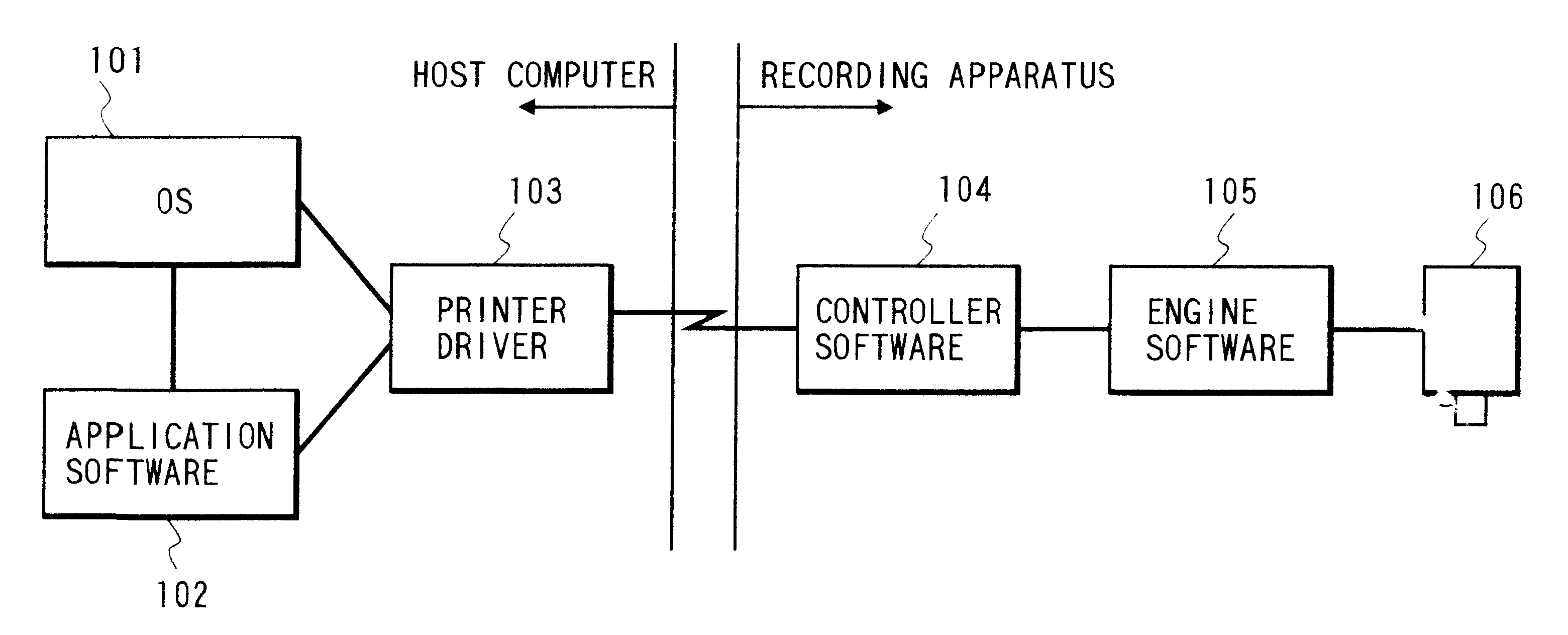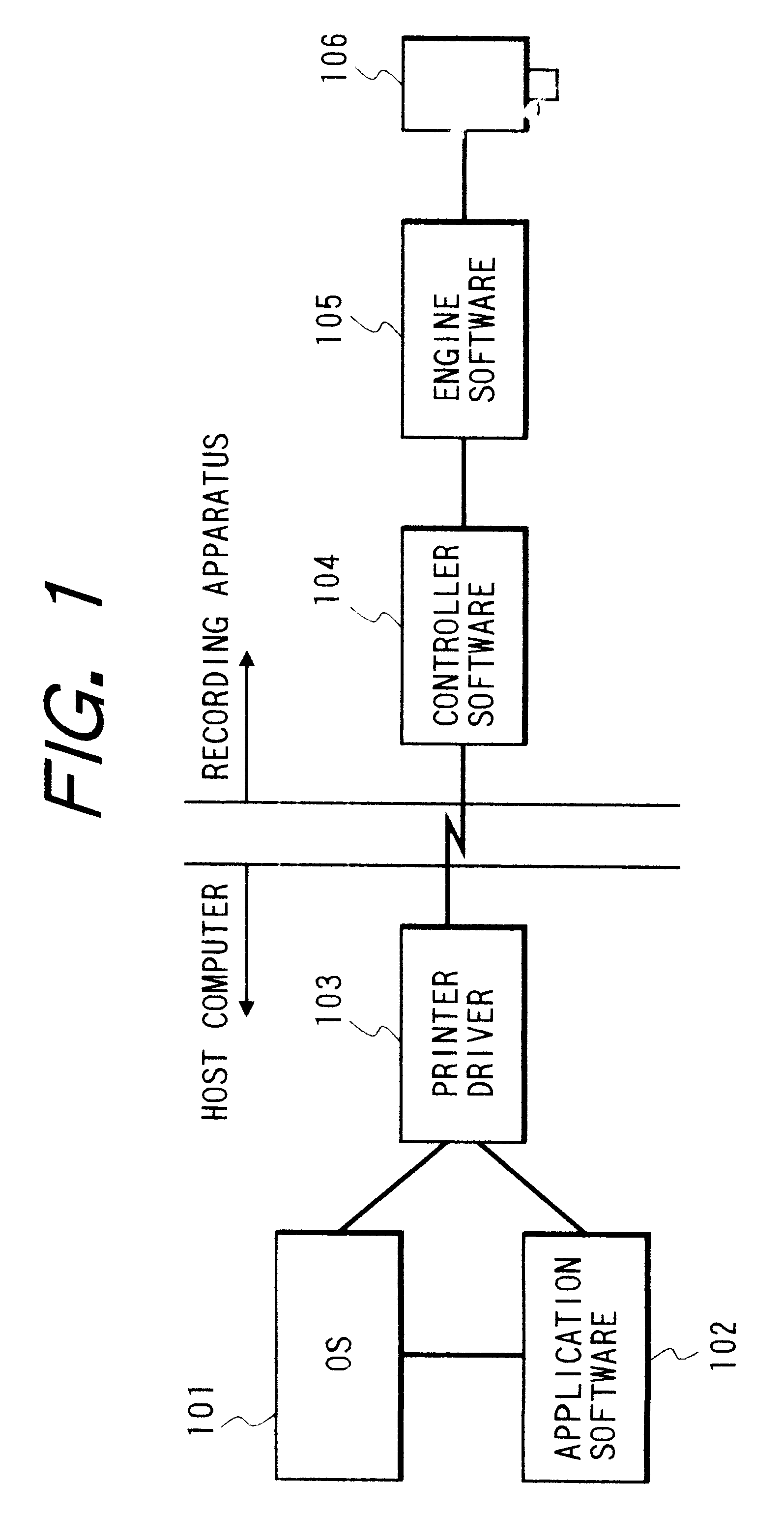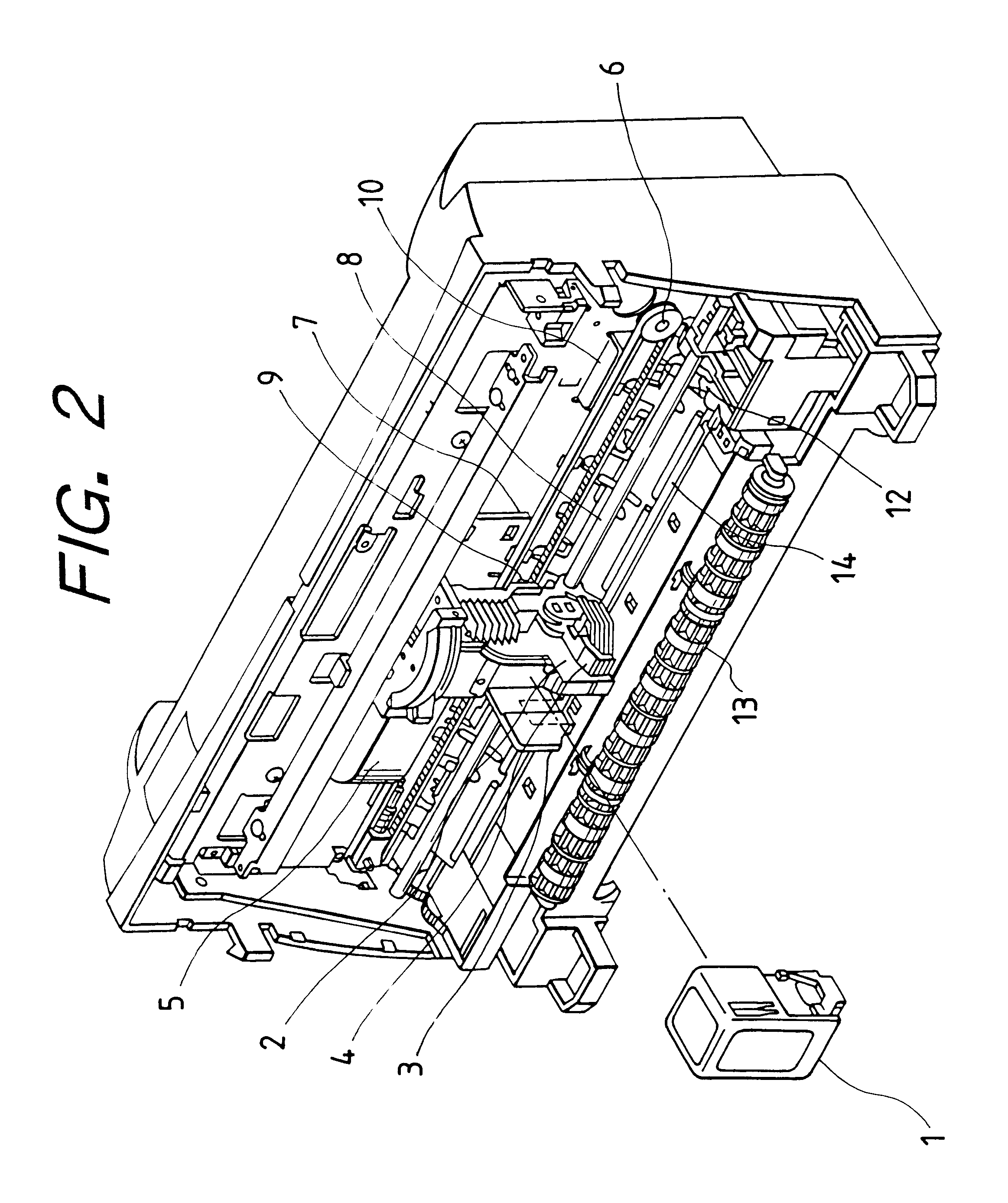Recording method using large and small dots
a recording method and small dot technology, applied in printing and other directions, can solve the problems of large size, large cost of the apparatus, and high cost of the conventional recording apparatus dedicated to photographic images
- Summary
- Abstract
- Description
- Claims
- Application Information
AI Technical Summary
Problems solved by technology
Method used
Image
Examples
second example
In the first example, a plurality of dots including large and small dots are used in accordance with the gradation of pixel data for recording pixel data represented by two bits. In the first example, the importance of the record order of large and small dots is not specifically described. However, it is known that the positions of small and large dots ejected from nozzles and recorded on recording medium shift slightly. Therefore, the record positions of small and large dots during one record scan of the recording head displace although this displacement is minute, so that a texture or the like may be formed on the recorded image.
FIGS. 26A to 26C show examples of recorded dots while the recording head is moved from the right to left as viewed in FIGS. 26A to 26C, and illustrate a displacement of recorded small and large dots caused by an ejection speed difference.
In FIG. 26A, timings indicated by solid lines represent true record positions of large dots, and timings indicated by br...
PUM
 Login to View More
Login to View More Abstract
Description
Claims
Application Information
 Login to View More
Login to View More - R&D
- Intellectual Property
- Life Sciences
- Materials
- Tech Scout
- Unparalleled Data Quality
- Higher Quality Content
- 60% Fewer Hallucinations
Browse by: Latest US Patents, China's latest patents, Technical Efficacy Thesaurus, Application Domain, Technology Topic, Popular Technical Reports.
© 2025 PatSnap. All rights reserved.Legal|Privacy policy|Modern Slavery Act Transparency Statement|Sitemap|About US| Contact US: help@patsnap.com



